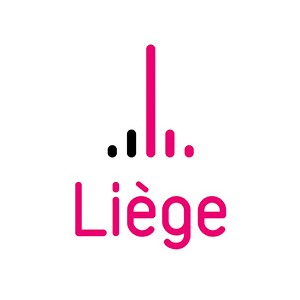Jacques OCHS, James Ensor

The lively line of a sharp eye
ILL. 1
Jacques Ochs
(Nice, FR, 1883 – Liège, B, 1971)
James Ensor, s.d.
Colour pastel, black ink, charcoal on paper
Paper : 23,4 x 21 cm – Support : 31,9 x 24,4 cm
Inv.BA.CED.23a.1967.24192
ILL. 2
Jacques Ochs
Monsieur Isi Collin, man of letters and editor of Le Soir and Le Journal de Liège , s.d.
Lavis, Indian ink, gouache, white highlights, colour highlights on paper
Paper : 22 x 11,5 cm - Support : 27,6 x 16,4 cm
Inv. BA.CED.23a.1970.24478
ILL. 3
Jacques Ochs (Nice, FR, 1883 – Liège, B, 1971)
Monsieur Simenon, s.d.
Gouache, white highlights, charcoal, black ink on paper
Paper : 18,4 x 16,8 cm - Support : 26,5 x 23 cm
Inv.BA.CED.23a.1970.24485
ILL. 4
Jacques Ochs (Nice, FR, 1883 – Liège, B, 1971)
Eugène Ysaye, s.d.
White pastel, charcoal, colour pastel, wash, Indian ink on paper
Paper : 14,1 x 14,6 cm - Support : 20,5 x 17,9 cm
Inv.BA.CED.23a.1970.24493
A man in profile watches us from the corner of his eye. With his white hair and shaggy beard, the artist James Ensor is testing us with his eyes. The painting he is doing is surprising, even disturbing, to say the least. In front of him is a frame, populated by masked figures with carnivalesque features and a skeleton in a top hat. In the background, a mermaid is exposed in the sea under a bright sun. In the lower left corner, four letters that can be recognized by all: "OCHS", the signature of Jacques Ochs.
A painter, caricaturist, poster artist and teacher, Jacques Ochs was a committed citizen and a multi-faceted artist who left an indelible mark on the cultural life of Liege.
Born in Nice in 1883, he was ten years old when his parents moved to Liege. He enrolled at the Académie des Beaux-Arts before continuing his training in Paris. There he copied the works of Rembrandt and Watteau in the Louvre and frequented the Académie Julian, as well as draughtsmen, including Forain. He was passionate about art, as well as sport, which he practised at a high level (aviation, and fencing, for which he won the Olympic gold medal in 1912 and the world championship in 1914).
His artistic talent was first exercised through his drawings. In 1909 and 1910 he published Les remarqués I and Les remarqués II, which brought together lithographed sketches of his contemporaries from Liège. At the beginning of the 20th century, the image took pride of place in newspapers. With a keen sense of observation, he produced portraits and caricatures for the Belgian weekly Pourquoi Pas ? and for Le Petit Parisien. Most of his portraits are done in front of a model, and rarely from a photograph. His success grew and being the object of his incisive, but always benevolent, line became flattering.
The success of his drawings did not prevent him from continuing his painting. In 1921, he became professor of painting at the Académie des Beaux-Arts, before being appointed to its management in 1934 and taking on the role of curator of the Musée des Beaux-Arts.
Jacques Ochs lived through two world wars. The first as a volunteer soldier, the second as a prisoner in the Breendonck camp. During these years of captivity, he never stopped sketching his fellow prisoners of war and his executioners, who remain frozen in his memory. In 1947, he published a collection of drawings, Breendonck.
The success of Jacques Ochs' work enabled him to participate in numerous exhibitions. He continued his prolific production of paintings and, in the 1950s, began to classify his sketches, which he annotated by identifying them and pasting them back onto thick paper. In 1965, suffering from eye problems, he put down his pencils and brushes. He died in 1971.
The drawing presented here is part of the collection of original drawings by Jacques Ochs acquired by the Cabinet des Estampes et Dessins of the City of Liège, which has been enriched over time by donations and purchases. This remarkable collection contains no fewer than 894 sketches, mainly portrait-characters, commonly known as caricatures, which served as the basis for the lithographs. Representatives of politics, the army, the press, defendants, scientists, professors, engineers, writers, painters, architects, sculptors, musicians... so many personalities from different backgrounds, most of them from Liège, are gathered in this eclectic gallery of portraits in charcoal, pencil, felt pen, Indian ink, watercolour and/or pastel. The attitude, the expression, the physique and the attributes that accompany his characters allow them to be identified.
Surrounded by his favourite themes, masks and skeletons, James Ensor (1860-1949) is set in a familiar setting, reminiscent of the Ostend coast where the artist grew up. Even the mermaid could be an echo of the Venus he had already depicted. Through his nervous, lively and precise brushstrokes, Ochs portrays the painter in a style that is close to his own. The interplay of precision and blur brought about by the use of charcoal and pastels enables the draughtsman to produce an expressive work, approaching the expressionist paintings of the portrait artist. The elementary and frank colours used - red and blue - also recall the works of Ensor, in particular the painting Death and the Masks from 1897, which is on display in the permanent collection of La Boverie.
The history of this painting links the two artists since in 1939, Jacques Ochs was part of the Liège delegation that went to the Lucerne auction and bought nine works considered by the Nazi regime to be "degenerate art", and today classified as "Treasures of the Wallonia-Brussels Federation". These include the painting by James Ensor. In addition to their common practice of drawing (portraits, sketches from life) and painting, both artists, endowed with a great sense of observation, developed a critical view of the society of their time, one of them being a "man of the people".
Laura Dombret
Specific attaché
Art historian



